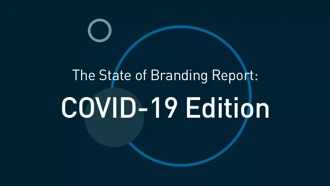One of the biggest challenges you face when trying to build and grow your brand is creating content that engages your customers on a consistent basis. Consistency and frequency are critical to brand management, as any marketer will tell you. But knowing this is one thing, and putting it into practice is quite another. Whether you have a team of writers or you’re the only one, content creation can be time consuming and maintaining or increasing frequency can be difficult.
So how can you make it easier on yourself and your team?
Analyze
Writing content without knowing what kind of impact it’s having on your customers and your brand is a gamble which may or may not pay off.
To ensure that you get a return from your investment in content marketing, the first thing to do is to take a close look at your analytics to figure out what kind of content has been popular with your visitors.
Look at the usual metrics like:
- how many website visits were driven by the article
- how many times it was shared
- how many comments did it receive
Also, look at these metrics for a further analysis:
- how much time visitors spent on those pieces
- how many visitors returned to your site
- how often and how soon did they return
- how many lead conversions resulted
This second set of metrics are even more important as these indicate visitor loyalty and the long-term value of your content, giving you an insight into what kind of content converts passive readers into active consumers of your product.
When looking at metrics, also pay attention to what format is most popular with your visitors — do they like to watch videos or read posts; in other words, do they prefer visual content or text? These metrics can help you determine where to focus your content efforts.
Once you have a better idea about the kind of content that appeals to your audience, it’s time to figure out how to leverage those materials and get the most out of it.
Repurpose
Repurposing content that has resonated with your audience is the easiest way to get more mileage out of it. For instance, if you find that an article received a remarkable response, it would be a great candidate for repurposing. Generally, you’ll find that evergreen content, topics that will always be relevant, is better for this versus trending subjects.
Quick ways to repurpose content would be to break up a long article into smaller chunks and go into more detail about each topic to create a series of articles surrounding one theme. Other ways to repurpose content would be to create a how-to post, a presentation, creative images for social campaigns, or an infographic. Maybe even create a short video that gives your audience a quick overview on the topic.
If you have a tremendous amount of content and want to aggregate it all, an ebook, a whitepaper, or a definitive guide might be the way to go. Also, keep in mind that with more content, brand management can sometimes get tough to regulate so each piece of content should be high quality.
When repurposing content, consider the format and the way you’ll share it with your audience. An image with a pithy quote about your product, for instance, might be great for Twitter, a how-to video for YouTube, a presentation for SlideShare, while statistics and information on how customers use your product could work well as an infographic for your blog and across all social channels.
Using multiple formats for your content is an opportunity to tap into new audiences you don’t want to miss, as it can help you generate more leads for your company and elevate your brand.
After repurposing, link your new pieces to the original post if it makes sense. This can improve your internal linking between posts and also help you get more “link juice” from the older post that might be ranking well in SERPs (search engine results page).
Refine
Look at some of your older blog posts and content. You might find that a lot of new information is available on a particular topic and could use some updating. Create a new article hitting similar points and jazz it up with the latest stats or trends.
When you take the time to provide new information for your audience, it shows that you care and are genuinely interested in providing them with up-to-date content that adds value. It helps that search engines take note as well.
Redistribute
Now that you have dressed up your old content, it’s time to redistribute. Redistributing can serve two purposes: help you reach new audiences, and bring the focus back on what’s important to your customer, and to you.
Use the appropriate channels and be sure to respond to feedback so you can keep the conversation going.
Repeat
Use these steps and make your content count.
Find out how Bynder could help you get the most out of your content marketing, sign up to a trial.












